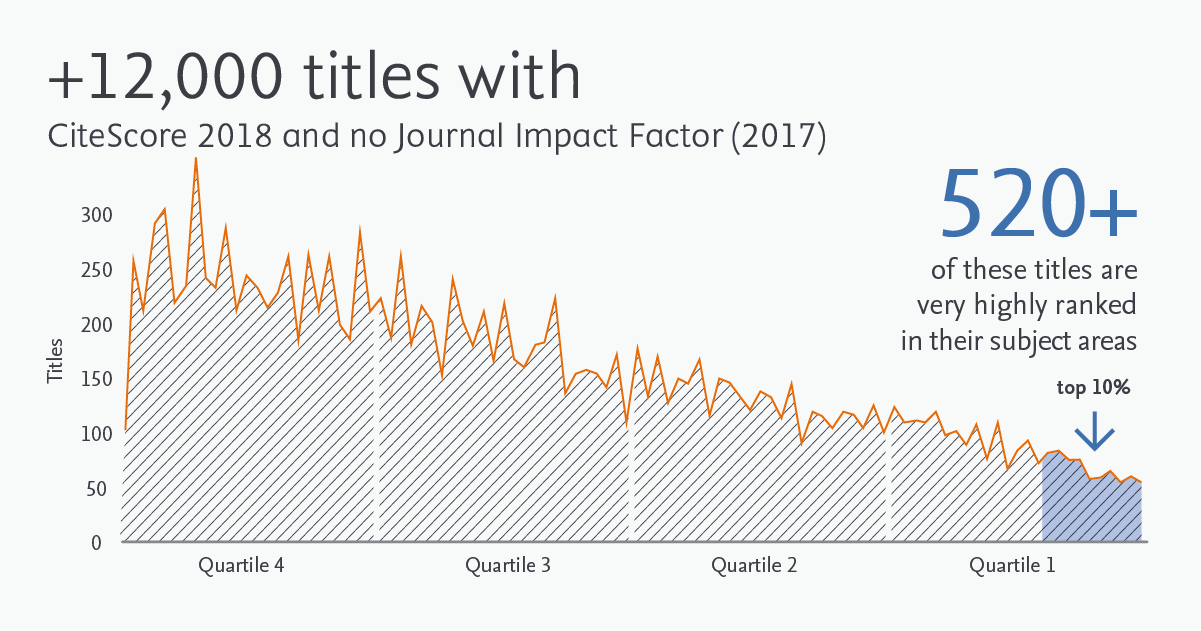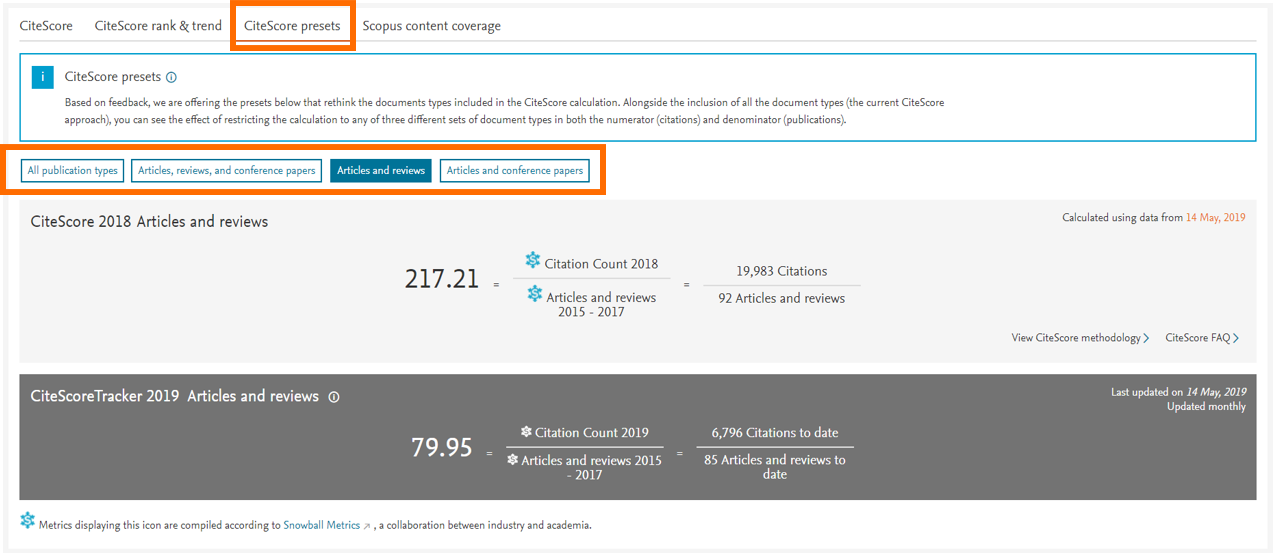CiteScore 2018 metrics now available
The CiteScore™ 2018 metrics are freely available for more than 23,830 titles.
Powered by Scopus, CiteScore metrics evaluate serial citation impact over a three-year period. Now the CiteScore 2018 metrics are available, revealing the latest annual assessments of thousands of scholarly publications.
What sets CiteScore metrics apart from the competition? They are comprehensive, transparent and free.
Comprehensive coverage: Available for 23,830+ titles on Scopus—including peer-reviewed journals, trade journals, book series and conference proceedings—in 330 disciplines, CiteScore covers 12,000+ more titles than the Impact Factor.
Transparency: CiteScore offers complete transparency of the underlying data, allowing anyone to validate a CiteScore value by clicking into the numerator (citations) and denominator (documents). Additionally, CiteScore metrics are calculated in a very straightforward way, so there aren’t any secret algorithms influencing the results.
Free access: CiteScore metrics are free to access even without a Scopus subscription through the Scopus Sources page and through individual source profile pages on Scopus.
How CiteScore metrics help researchers
Your time is valuable, so you need to choose what you read wisely. With such comprehensive serial coverage, CiteScore can help researchers discover more titles, both within their own disciplines and in other areas of interest. This broadening of your scope can help drive more informed decisions about what to read.
Just as important as knowing which publications to read is knowing which ones to publish in. CiteScore helps guide you to the right titles for your research, so you can submit your work with confidence.
Search and filter features let you explore the full range of CiteScore Metrics for a group of titles such as open access journals, a subject area or a specific publisher.
What’s new with CiteScore this year?
New document type preset function for 2018 CiteScore metrics
New this year, based on user feedback, is a functionality to include document type presets.
Alongside the inclusion of all document types in the default CiteScore calculation, users can see the effect of manually restricting the calculation to any of three different sets of document types in both the numerator, i.e. citations counted, and denominator, i.e. publications counted. This provides additional transparency relating to the way certain document types might impact a title’s CiteScore value.
Four preset buttons are available.
- All publication types (the default CiteScore value)
- Articles, reviews and conference papers
- Articles and reviews
- Articles and conference papers
CiteScore Tracker will also reflect the updated calculations for the respective preset options.
Unlike the default CiteScore and CiteScore Tracker values, the preset options do not have clickable links for the citations and document counts. Instead the data is static.
Keep track all year long
You can learn a lot from the CiteScore 2018 values, but for a continuing evaluation throughout the year, check out CiteScore Tracker. That way, you can monitor the progress of the metrics month by month. (Learn how to access the CiteScore Tracker here)



